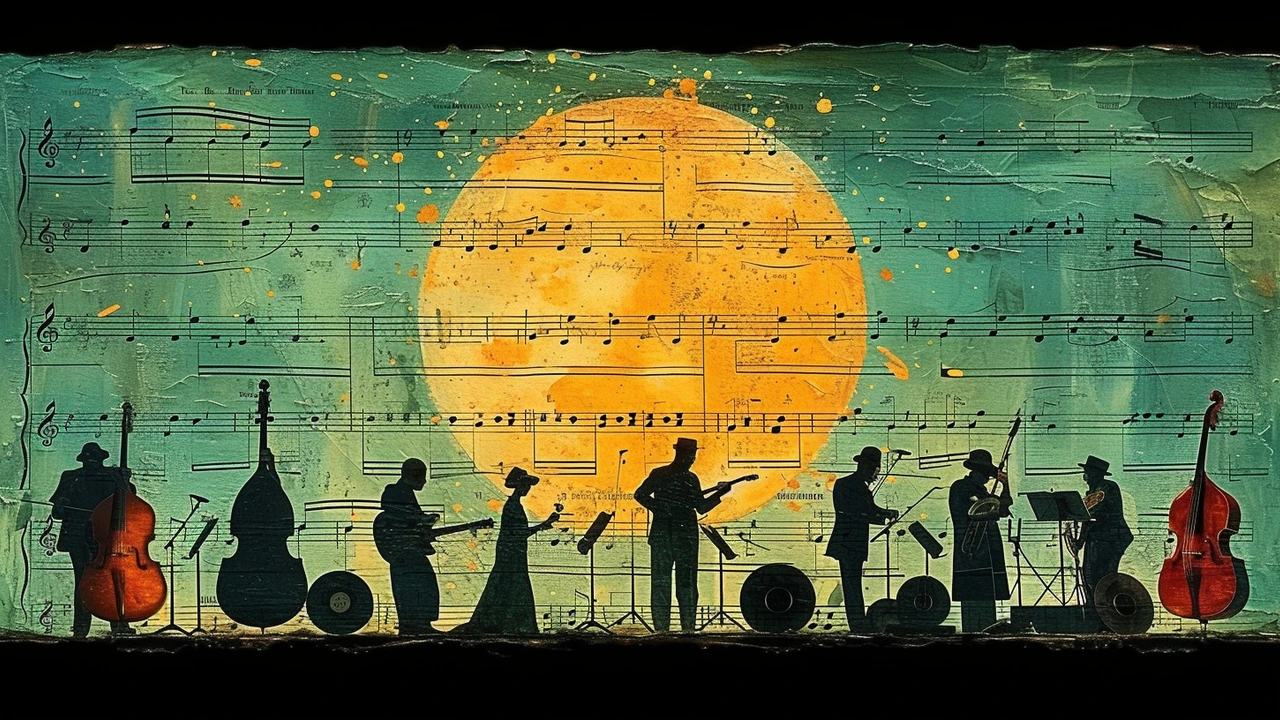Harmonising the Visuals: The Unseen Soundtrack
Remember those spine-tingling moments in some of your favourite movies when the protagonist delivers an emotive dialogue or moves towards an epic climax? Most of our hearts have raced, filled up with emotions, or even shattered into pieces, all perfectly coordinated with our favourite scenes. I'm Zephyr and as an ardent music lover and movie buff, today, I'm delving into something that intertwines these two interests - the role of music genres in cinematic storytelling.
Music and cinema have been symbiotic friends since films started moving from silence to sound. The dance between audio and visual isn't a new tango. However, the manipulation of our emotions using different genres of music in cinema is something worth exploring. The use of music genres in cinematic storytelling is an art, a psychological tool and a director's secret weapon to enhance the narrative and convey emotions that can go beyond dialogues and performances.
Setting The Rhythmic Ambience: Music and Cinematic Moods
Imagine watching a horror movie without those pulse-pounding tracks, or a romantic film without those soulful melodies. Doesn't it feel incomplete? Irrespective of the genre, the film's background score has a tailored sound that can enhance, highlight, or even contradict the visual narrative, making it indispensable to the storytelling process.
Scientific research by psychologists has shown that music can affect our mood and emotions. This explains why certain melodies make us joyful, peaceful or even sad. Directors, understanding this psychological truth, often use music genres to invoke specific emotions from the viewers, adding a deep and emotional connection to the film's scenes. Let me tell you, this subconscious manipulation is an art, and when executed right, it’s amazing how influences can happen without us even realizing it.
Leveraging Music to Amplify the Narrative
Believe it or not, each music genre plays a unique and distinct role in cinematic storytelling. When it comes to music enhancing narrative and storytelling, nothing is off-limits in cinema. It's like painting; you can blend any coalescence of genres to create an emotion, mood or effect. The possibilities and combinations are only limited to a director's imagination!
To exemplify, suspense and thrillers often utilize high-tempo tracks, punctuated by unexpected bursts of sound, to keep us on the edge of our seats. Alternatively, take romance films. The tune played when the aspiring couple finally confesses their love often ties into the narrative, symbolizing, say, the blooming of a beautiful rose, or the sweet smell of victory after an intense marathon, or the hot feeling of spicy ramen on a cold Melbourne night. Yes, I am a sucker for Asian cuisine!
Music Genre: The Silent Character in Movies
Here's where it gets interesting. A music genre in a film plays a more significant role than just setting the mood and amplifying the narrative. It can literally become a character in the movie, telling its own story or providing an intimate insight about another character. When used correctly, the music genre can reveal to the audience the innermost secrets of a character or guide us through different timelines or plot developments. My kids, Leonardo and Seraphina, often get curious about the kinds of music they should use for their amateur filmmaking endeavours, and honestly, I always tell them, it's an experimentation process!
Take, for instance, the harmonica in "Once Upon A Time in the West". The instrument's mournful tune wasn't just a recurring motif; it was a character that revealed its backstory in parallel with the unfolding narrative. Or perhaps the use of punk rock in "Trainspotting" which subtly communicated the rebellious and dystopian lifestyle of the characters. Truly, music is more than just a background score; it’s an unseen character narrating its own tale.
The Unseen Guide: Orchestrating Music with Cinematic Strokes
The last piece of this noisy puzzle is orchestration - the process of arranging a piece of music for an orchestra or other ensemble. Where exactly in the movie the music piece goes, and how it's crafted, is equally important as the choice of the genre itself. A suspenseful sequence can fizzle out if the accompanying tune is misplaced or is ill-fitting to the narrative.
A great example of music orchestrating the cinematic narrative is the iconic shower scene from "Psycho". Split second staccato strings perfectly matched with the stabbing motion, instilling pure terror and dread. Another one is "Inception", where the slow-motion scenes synchronized with the distorted and slowed down version of Edith Piaf’s “Non, je ne regrette rien”, is a testament to how detail-oriented and precise the orchestration process really is. Carefully orchestrated music has helped those scenes engraved themselves in cinematic history.
In conclusion, music genres in cinematic storytelling aren't just an auditory window dressing but a central character that reveals, enhances, and often drives the narrative. It manipulates our emotions, connects us with characters at a deeper level and guides us through the director's vision. As we move forward, with technological advancements, it'll be exciting to see how the dynamics of music and storytelling evolve.
So next time when you’re watching a film, pay attention to the music, try to see what it’s telling you, apart from what your eyes can see. You might just discover a whole new world within the same film. As for me, time to check on Leonardo’s and Seraphina’s latest film project, I’ve heard they’ve planned to use techno music this time, should be interesting!

